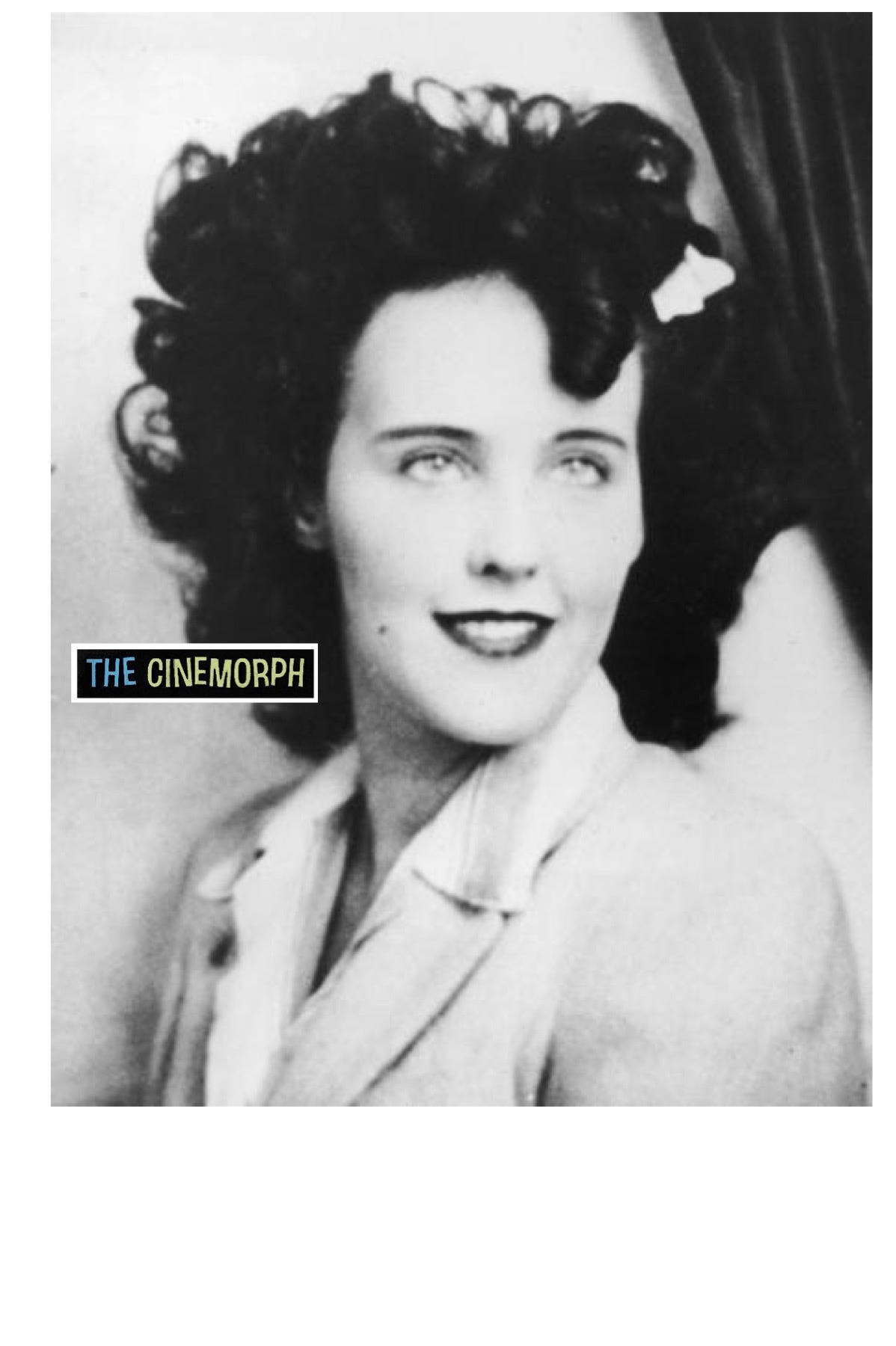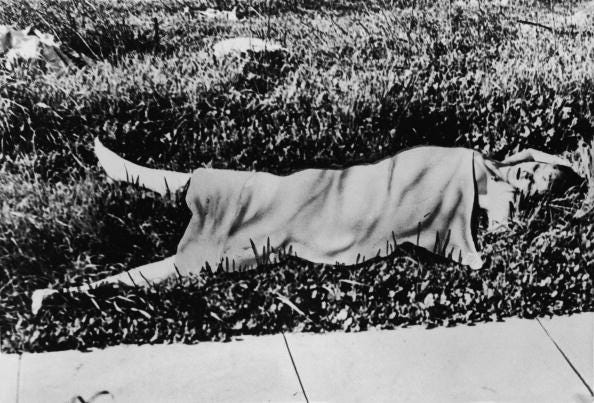The Black Dahlia
One of the most famous figures from Hollywood's Golden Age never shot a frame of film.
She is one of the biggest stars of the Golden Age Of Hollywood. An Iconic figure, she is the face of the city’s decadence and savage underbelly. She is a one-woman noir sub-genre, heralded in best-selling novels, non-fiction books, countless documentaries and even her own big screen, A-list, major motion picture. To many, her image is as recognizable as the biggest stars of her day, yet she never shot a single frame of film. It was her death that made her famous. It occurred two weeks into 1947, and it would haunt Los Angeles ever after.
1947 was a year of cultural transition and Big Weird. On the one hand, in the aftermath of World War II, America stood astride the world a military, economic and cultural colossus. American soldiers streamed home from the war, populated the suburbs and started the baby boom. Over a million ex-G.I.’s enrolled in college. Millions of Americans began to slowly shake off the psychic trauma of World War 2. Others were not so lucky. Unable to put the war behind them and rejoin society, they fell by the wayside. Boozy, stumbling, shattered ghosts, haunting the bars, skid rows and flop houses across the country.
Tensions between the sexes began to rise. The women who took their husband’s places in the workforce were unwilling to shuffle quietly back into the kitchen now that those husband’s were back from the war. The Beatniks, embracing a new, Buddhist-tinged way of life dedicated to free love, poetry, jazz and coffee, were just beginning to form. 1947 was the year a UFO may or may not have crash-landed in Roswell, New Mexico. It was also the year Hollywood began blacklisting writers and actors suspected of communist leanings. The Cold War was getting underway, and postwar America, for all its might and power, was a vicious, racist, paranoid place.
Film noir was in its heyday, dark cinematic tales of crime and brutality, celebrating an inversion of the American Dream. An open acknowledgment that America wasn’t all it was cracked up to be. There was a system, it was rigged, and if you could cheat and get away with it, good for you. These were not the ideals the boys were fighting for overseas, but they were the facts. Crime did pay. Bad things happened to good people.
Sometimes, really bad things.
On the cold, grey morning of Wednesday, Jan 15th, 1947, a young woman was walking her baby past a vacant lot at the intersection of 39th and Norton in South Central Los Angeles. She stopped, seeing what she believed to be a discarded dress mannequin lying in the weeds.
If only.
WARNING: GRAPHIC
The “dress mannequin” turned out to be the body of a woman. She was nude, her arms and legs splayed open in a lewd, garish display. She was battered and bruised, her mouth sliced open from ear to ear creating a leering grin that mocked the savagery that had befallen her. The reason the woman who found her initially thought she was a dress mannequin was because she was in two pieces. She had been severed cleanly in half at the waist.
The body of Elizabeth Short as shown in Los Angeles newspapers. The photo was heavily retouched. The blanket was added and her face was extensively repaired for the image.
Her name was Elizabeth Short. A Los Angeles transplant from Medford, Massachusetts. The horror that befell her was so brutal, so inhuman, that the press initially dubbed it The Werewolf Murders. But soon another name would be coined, and this one would stick. The Black Dahlia.
More. Much more.
Next.





